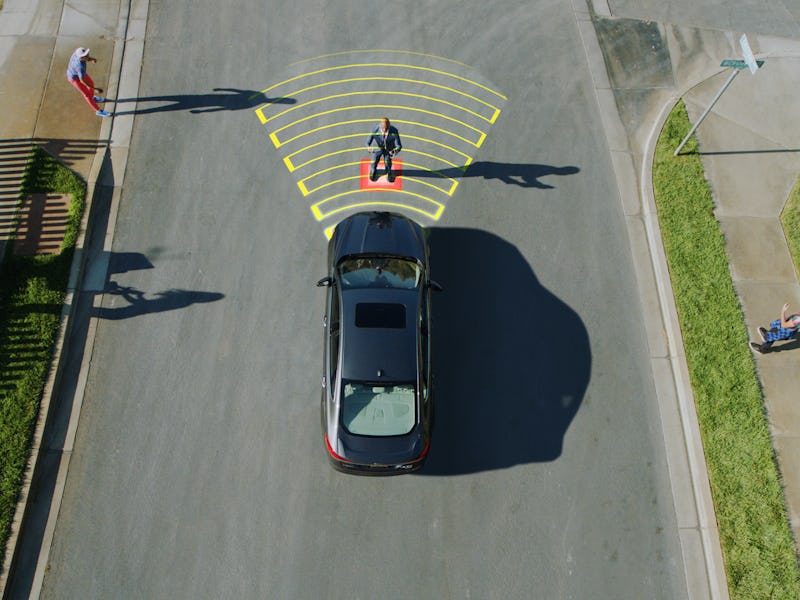A decade from now, autonomous vehicles will be the norm, and this week it wasn’t Tesla, or Uber, or Google that took another step in that direction, but Ford. The company debuted its “Pedestrian Detection” technology that uses radar and a video camera to collect data about what’s in front of a car — and hit the brakes if it’s a person.
“We use that information and feed it into our algorithm, which lets [the driver] know if there’s a collision with a pedestrian or vehicle that’s imminent,” Scott Lindstrom, Ford’s driver assist technologies manager, explains to Inverse. Using the car’s speed and the distance from the object, the system makes a determination on when to sound a chiming alarm and hit the brakes to avoid a collision.
That algorithm is stored within the car’s computer, and the system isn’t connected to the internet. Lindstrom says his team is “going to continue to work on making it better,” but currently, there’s no option to download software updates straight from the manufacturer like the Tesla Autopilot update system.
“In the actual car you can buy today, it doesn’t need to talk to the cloud or internet,” he says. “Everything’s contained within the car.”
So how does it know when to hit the brakes? The algorithm is informed by 500,000 miles of data (good for 240 terabytes), collected by twelve test cars on streets in the United States, Europe, and China. The feature is available in the 2017 Ford Fusion, and is already in cars that are on lots right now, Lindstrom says, ending a project for a core team of about 15 people that included 473 days of driving.
It amounts to a system that recognizes a person in the street.
“If a pedestrian is directly in front of us and we recognize it early, we set up the alarm, and you might have half a second or a second before you get to full braking,” Lindstrom explains. “If the pedestrian jumps out suddenly, then the alarm and the braking are going to occur pretty close together.”
While Ford’s had radar and cameras in its cars before, this is the first time the two technologies (the radar is behind the front bumper and the camera is behind the rearview mirror) have been used together.
Ford CEO Mark Fields recently made headlines when he announced the company wants autonomous Fords on the streets by 2021. This is not that, Lindstrom says, explaining that the automaker has two work streams: full autonomy and driver-assist technology, like the pedestrian detection system. The tech announced this week can be added to cars with relative ease compared to the numerous sensors needed for fully autonomous cars.
When asked if the camera has a record function that kicks on when the system is deployed, Lindstrom couldn’t offer an answer: “I guess I’m not comfortable answering that question.”
Ford sent over a statement later that reads simply:
Ford does not sell or share customer data with other companies. We only share data with service providers to fulfill requests by customers, and only with their explicit opt-in and full transparency.
So while the life-saving measures of this new technology seem clear, the ethical implications of capturing driver data are not yet sorted out.
